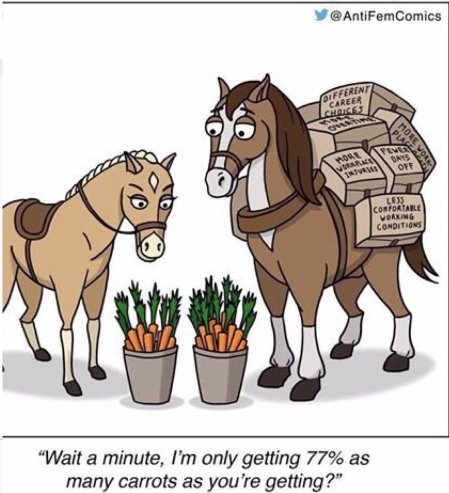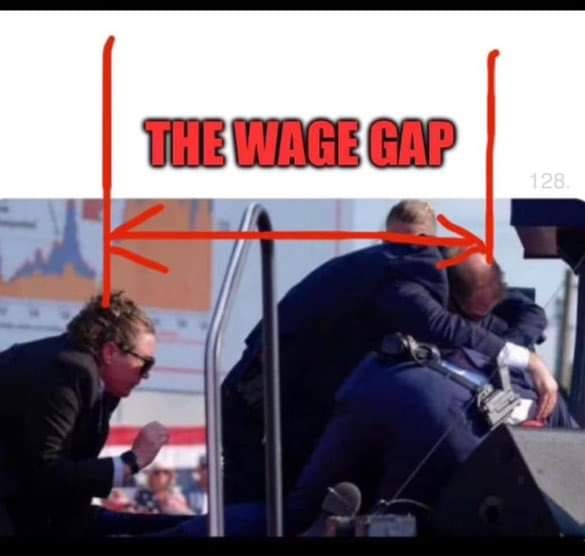Wage gap


The gender pay gap, also known as the wage gap so often spoken about and even cited in the media is not a result of a systematic bias against women. Research has clearly shown that the choices that men and women make, in the types of employment they undertake the amount of overtime they are prepared to work, and whether they are prepared to work in remote, dirty and dangerous conditions explain the vast bulk of the wage gap. A major study commissioned by the US department of Labor, the CONSAD Report shows that in the United States the wage gap is reduced to 4.8-7.1% after taking in to account known factors.[1]
The claim that women are paid less than men in a like for like comparison or for equal work has been widely debunked but continues to be widely reported as fact. The online Encyclopedia Britanica claims:
This inequality in men’s and women’s pay scales, even for equal work, still exists.[2]
Wiltshire Police admit that the pay gap occurs as a result of differing work rather than discrimination at the same page grade:
“Men and women are paid equally at every grade in Wiltshire Police,” the report reads. “However, if one gender dominates higher pay-graded roles then this results in a gender pay gap.[3]
Several large companies have conducted external audits of consistency in their pay rates. These have often resulted in men as well as women receiving pay rises. In some cases more men than women received pay rises.
| Country | Company | Year | Men | Women |
|---|---|---|---|---|
| Australia | Lion | 2017 | 700 | 950 |
| Australia | Energy Australia | 2018 | ~80 | ~350 |
| United Kingdom | BBC[4][5] | 2018 | 98 | 90 |
Additionally, in 2012 Google commissioned a study on gender and pay at the company. More men and women received pay rises as a result of this study but the numbers involved are unclear.[6][7]
While there is no pay gap in modern Western nations, there is an earnings gap and the reasons are well understood.
External Links
- Wage Gap Final Report - CONSAD
- Once You Impose the Ceteris Paribus Condition The Alleged 23% Gender Wage Gap Starts to Evaporate
- Rosie the Riveter
- Informative Graphic
- Attempt by The Guardian to claim there really is a gender pay gap
- Harvard Study: "Gender Wage Gap" Explained Entirely by Work Choices of Men and Women
- The Australian gender wage gap: how much can be explained with fixed effects?
- Factfuss
- Daily Wire[8]
References
- ↑ http://www.shrm.org/hr-today/public-policy/hr-public-policy-issues/Documents/Gender%20Wage%20Gap%20Final%20Report.pdf
- ↑ https://www.britannica.com/topic/history-of-work-organization-648000/Women-in-the-workforce
- ↑ https://j4mb.org.uk/2021/04/04/women-outnumber-men-in-wiltshire-police-force-1140-to-1101-all-but-one-of-63-of-their-staff-hired-between-2019-and-2020-were-female-and-36-have-police-officer-roles-the-force-is-still-striving/
- ↑ https://www.dailymail.co.uk/news/article-5332355/BBC-hands-pay-rises-men-women.html
- ↑ https://archive.ph/uWysg
- ↑ https://www.nytimes.com/2019/03/04/technology/google-gender-pay-gap.html
- ↑ https://archive.is/iJMBm
- ↑ https://archive.ph/ZPc5o